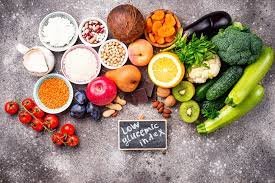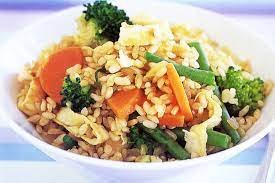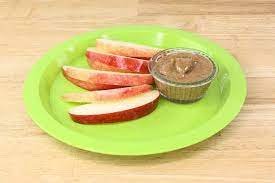
Comprehensive Guide on Low Glycemic Index Diet Plan for Weight Loss

In the search for an effective weight loss diet plan, it is crucial to pay attention to the types of food we consume. One favorable technique is the inclusion of low glycemic meals into our diets.
Table of Contents
Introduction
The glycemic index assesses how rapidly carbohydrates in a diet elevate blood sugar levels. Low glycemic meals give a continuous release of energy, increase satiety, and help maintain stable blood sugar levels. In this article, we’ll look at a low glycemic index foods list that can help with weight loss and provide a nutritious and sustainable approach to healthy eating.

The Glycemic Index Explained
The glycemic index (GI) classifies carbohydrates according to how quickly they elevate blood sugar levels. High GI foods are rapidly digested and absorbed, resulting in a significant rise in blood sugar levels. Low GI foods, on the other hand, are digested and absorbed more slowly, resulting in a gradual and consistent rise in blood sugar levels.
The following is the GI classification:
- Low GI: of 55 or less
- Medium GI: 56-69
- High GI: 70 or above
Several factors influence a food’s GI, including carbohydrate type, cooking style, processing, and the presence of fiber and fat. Refined carbs, such as white bread, white rice, and sugary snacks, have a high GI, whereas whole grains, legumes, fruits, and vegetables have a lower GI.
Understanding the glycemic index is critical for weight management since low glycemic meals give a gradual release of energy, reducing blood sugar spikes and crashes. This consistent supply of energy aids in appetite regulation, desire reduction, and the promotion of a sense of fullness.
Benefits of Low GI Diet Plan for Weight Loss

Including low glycemic meals in a weight loss program has various advantages:
Sustained energy and stable blood sugar levels: low GI diets promote stable blood sugar levels, reducing energy highs and lows throughout the day. This helps to keep energy levels steady and reduces cravings for bad snacks.
Increased satiety and decreased cravings: low GI foods are usually high in fiber and take longer to digest, so they keep you feeling fuller for longer. This can aid with appetite control and decrease the likelihood of overeating or succumbing to harmful food desires.
Improved insulin sensitivity and diabetes management: Eating low GI meals can improve insulin sensitivity, which is crucial for people who have diabetes or are at risk of getting it. low GI meals have been demonstrated to enhance blood sugar management and minimize insulin requirements in people with type 2 diabetes.
Lower risk of heart disease and better cardiovascular health: low GI diets high in whole grains, fruits, vegetables, and lean proteins have been linked to a lower risk of heart disease. They aid in the maintenance of healthy cholesterol and triglyceride levels, the reduction of blood pressure, and the improvement of general cardiovascular health.
Increased weight loss and weight management: low GI meals may provide a balanced, nutrient-dense diet, which may aid in weight reduction and weight management. low GI meals can support good eating habits and long-term weight maintenance by stabilizing blood sugar levels, lowering hunger pangs, and encouraging satiety.
It’s crucial to note that, while low GI meals can help you lose weight, they should be part of a well-balanced, calorie-controlled diet.
Meal Planning with Low Glycemic Index Foods

To guarantee balanced nutrition and variety, effective low GI meal planning includes many critical strategies:
Understanding portion sizes and macronutrient balance: While the GI of specific foods is important, it’s equally important to pay attention to portion sizes and the overall macronutrient balance of meals. To make an enjoyable and well-rounded low gi diet plan for weight loss, include appropriate servings of protein, healthy fats, and fiber-rich carbohydrates.
Incorporating a diverse range of low GI foods into meals: Aim for a diverse range of low GI foods to ensure a wide range of nutrients and flavors. Include entire grains such as quinoa, brown rice, and whole wheat bread, as well as low GI legumes, veggies, and fruits. This variety will help reduce nutritional monotony and boost meal plan adherence.
Making low GI snacks and desserts: Making low GI snacks and desserts might be difficult while following a low GI diet plan. Choose raw veggies with hummus, Greek yogurt with fresh berries, or a small handful of nuts as snacks. Choose fresh fruit, low-sugar Greek yogurt, or a small piece of dark chocolate for dessert.
Meal planning and easy low GI options: Planning and cooking meals ahead of time can be a game changer when it comes to sticking to a low gi diet plan for weight loss. Prepare larger quantities of low GI foods and separate them into individual portions for quick and easy weekday meals. Consider adopting time-saving choices such as frozen low GI veggies or canned lentils to make meal preparation easier.
You may develop a well-balanced low GI meal plan that supports your weight loss objectives while also providing appropriate nutrition and enjoyment by adopting these ideas.
Meal Ideas with Low Glycemic Index Foods
Breakfast Recipes with Low Glycemic Index Foods
Breakfast is frequently seen as the most important meal of the day, and including low GI options can help set the tone for healthy eating throughout the day. Here are some tasty low GI breakfast options:

Whole grain oatmeal with berries and nuts: Begin your day with a bowl of whole grain oatmeal, such as steel-cut or rolled oats. Top with a handful of fresh berries, such as blueberries or raspberries, and a sprinkle of chopped nuts, such as almonds or walnuts. This combo contains fiber, antioxidants, and healthy fats that will keep you full and invigorated.

Greek yogurt with sliced fruits and chia seeds: Choose plain Greek yogurt, which is high in protein and low in added sugars. Add sliced fruits such as strawberries, kiwi, or peaches for natural sweetness and extra nutrients. Chia seeds provide an omega-3 fatty acid boost as well as fiber.

Vegetable omelet with whole grain toast: Make an omelet with egg whites or whole eggs and fill it with colorful veggies like spinach, bell peppers, mushrooms, and onions. Serve with whole grain bread for more complex carbohydrates and fiber.

High-fiber smoothies with spinach and avocado: Combine low GI ingredients to make a nutritious smoothie. Begin with unsweetened almond milk or Greek yogurt as a base, then top with a handful of spinach, half an avocado for healthy fats, and a scoop of protein powder. Include a tiny amount of low GI fruits, such as berries or half a banana, for natural sweetness.
These breakfast recipes include a variety of carbohydrates, protein, and healthy fats, as well as fiber-rich items that aid digestion and help keep blood sugar levels constant.
Lunch Ideas with Low Glycemic Index Foods
Lunchtime allows you to replenish and recharge for the rest of the day. Here are some tasty low glycemic meals as lunch options:

Quinoa and roasted veggie salad: Cook and cool a batch of quinoa, a protein-rich grain with a low GI. Toss with roasted vegetables like sweet potatoes, bell peppers, zucchini, and cherry tomatoes. For flavor, sprinkle with fresh herbs, drizzle with olive oil, and squeeze with lemon juice.

Grilled chicken breast with mixed greens and vinaigrette: Grill a chicken breast and serve it on a bed of mixed greens with vinaigrette. For a low GI dressing, make a homemade vinaigrette with extra virgin olive oil, balsamic vinegar, Dijon mustard, and a touch of honey or maple syrup. For added freshness and nutrients, toss in some cherry tomatoes, cucumber slices, and avocado.

Lentil soup with whole grain bread: Lentils are high in plant protein and have a low GI. Use vegetable broth, chopped vegetables like carrots, celery, and onions, and aromatic spices to make a hearty lentil soup. Combine it with a slice of whole grain bread for a complete and filling lunch.

Brown rice and vegetable stir-fry: Cook and set aside some brown rice, a nutrient-dense whole grain. In a small amount of olive oil, stir-fry a variety of colorful vegetables such as broccoli, bell peppers, snap peas, and carrots. If preferred, add some lean protein like tofu, shrimp, or chicken. Season with low-sodium soy sauce or stir-fry sauce from scratch.
These lunch ideas provide a filling and healthy midday meal by combining fiber, protein, and a variety of bright vegetables.
Dinners with Low Glycemic Index Foods
Dinner is a time to relax and enjoy a delicious meal. Here are some low GI dinner ideas according to the low gi diet plan for weight loss that are delicious too:

Baked salmon with roasted sweet potatoes and steamed broccoli: Season a fresh salmon fillet with herbs, lemon juice, and olive oil before baking it. Bake it in the oven until it’s done. Serve it with roasted sweet potatoes, which have a lower GI compared to regular potatoes, and steamed broccoli for a nutritious and well-balanced dinner.

Turkey meatballs with zucchini noodles and tomato sauce: Prepare turkey meatballs using lean ground turkey, whole wheat breadcrumbs, and herbs. Bake or pan-fry them until cooked. Use a spiralizer or julienne peeler to make zucchini noodles as a low GI alternative to pasta. Top the zucchini noodles with a flavorful tomato sauce made from scratch or choose a low-sugar store-bought option.

Grilled tofu with quinoa and sautéed spinach: Marinate tofu slices in a mixture of low-sodium soy sauce, garlic, and ginger. Grill or pan-fry until golden. Serve it with cooked quinoa for protein and fiber and sautéed spinach for extra benefits.

Beef stir-fry with brown rice and mixed veggies: Slice lean beef into thin strips and stir-fry with a colorful variety of vegetables such as bell peppers, broccoli, snap peas, and mushrooms. Serve with cooked brown rice and a low-sodium stir-fry sauce for a filling and balanced dinner.
These low glycemic diet plans include lean proteins, complete grains, and plenty of vegetables to provide important nutrients while also aiding in weight loss.
Note: There might be affiliate links mentioned here. We may receive a commission if you purchase a product through an affiliate link. There is no additional charge for you. Please do your own research before making any online purchases.
Snack and Dessert Ideas with Low Glycemic Index Foods
Snacks and desserts can be tasty while remaining low GI. Here are some suggestions to help you satisfy your cravings:

Apple slices with almond butter: Slice a crisp apple and eat it with a tablespoon of almond butter. The mix of fiber from the apple and healthy fats from the almond butter will keep you content and create a balance of flavors.

Raw vegetables with hummus: Cut up a variety of colorful vegetables like carrots, bell peppers, celery, and cherry tomatoes. Dip them in a portion-controlled amount of hummus, which adds protein and healthy fats to the snack.

Greek yogurt with fresh berries: Choose plain Greek yogurt, which is lower in sugar and higher in protein compared to flavored variants. Top it with a handful of fresh berries like strawberries, blueberries, or raspberries for natural sweetness and antioxidants.

Dark chocolate-covered almonds: Indulge in a modest quantity of dark chocolate-covered almonds. Dark chocolate with a high cocoa content is lower in sugar and delivers antioxidants, while almonds supply healthful fats and fiber.
These snack and dessert choices are low glycemic meals that provide a good balance of nutrition, portion control, and sweetness without producing blood sugar spikes.
Tips for Including Low Glycemic Index Meals in Your Diet

Consider the following suggestions to properly incorporate low glycemic diet plans into your lifestyle:
Read food labels and make intelligent choices: Examine the nutritional labels of packaged items to determine carbohydrate content and select options with lower GI values. Look for complete grains, high fiber content, and few added sugars.
Experiment with different cooking methods and flavors: To bring out the natural flavors of low GI foods and make your meals more enjoyable, try roasting, grilling, steaming, or sautéing. To add taste without relying on high-GI items, experiment with herbs, spices, and healthy sauces.
Plan your meals and snacks ahead of time: Spend some time planning your meals and snacks for the week. This will allow you to make more informed decisions and ensure that you have all of the necessary materials on hand. Consider meal preparation to save time and make sticking to your low GI food plan easier.
Emphasize whole, unprocessed foods: Whole, unprocessed foods are often lower in GI and include more nutrients. Include a variety of fruits and vegetables, whole grains, lean proteins, and healthy fats in your diet.
Keep portion sizes in mind: While low GI meals are advantageous, portion control is still necessary for weight loss. Watch your portion sizes and pay attention to your body’s hunger and fullness cues. Even low GI foods are easy to overeat if amounts are not regulated.
Stay hydrated: Adequate water is vital for general health and can aid in hunger control. Stay hydrated by drinking enough water throughout the day to prevent confusing thirst with appetite.
Seek professional help if necessary: If you have unique dietary needs, medical issues, or are unclear about how to develop a low GI meal plan, speak with a qualified dietitian or nutritionist. They can give you personalized advice and support to help you reach your weight loss objectives.
FAQs
What exactly is the glycemic index (GI), and why is it crucial for losing weight?
The glycemic index (GI) classifies carbohydrates according to how quickly they elevate blood sugar levels. It is crucial for weight loss because low GI foods give a sustained release of energy, reducing blood sugar spikes and crashes, which can help regulate hunger and cravings.
What are the advantages of including low GI meals in a weight loss plan?
low GI meals provide various advantages, including increased satiety, higher insulin sensitivity, a lower risk of heart disease, and the potential for increased weight loss and weight management.
Can low GI meals aid in the control of diabetes?
Yes, low GI meals can help improve blood sugar control and insulin sensitivity, making them useful for people who have diabetes or are at risk of getting it.
Are low GI meals good for your heart?
Yes, low GI diets high in whole grains, fruits, vegetables, and lean proteins have been linked to a lower risk of heart disease. They can aid in the maintenance of appropriate cholesterol levels, the reduction of blood pressure, and the improvement of general cardiovascular health.
Is it important to adhere to a strict diet plan in order to consume low GI meals for weight loss?
While there are specific low gi diet plans for weight loss available, low GI foods can be incorporated into a balanced and calorie-controlled diet to effectively promote weight loss.
What tactics can I employ to plan effective low glycemic diet plans?
Understanding portion sizes, adding a range of low GI foods, preparing snacks and sweets with low GI alternatives, and using handy options like frozen veggies or canned beans are all part of effective low GI meal planning.
Can you provide me with some low GI breakfast options for losing weight?
Sure, try these low GI breakfast options: whole grain oatmeal with berries and nuts, Greek yogurt with sliced fruits and chia seeds, vegetable omelet with whole grain toast, and high-fiber smoothies with spinach and avocado.
What are some low GI lunch options that are both filling and suitable for weight loss?
Quinoa and roasted vegetable salad, grilled chicken breast with mixed greens and vinaigrette, lentil soup with whole grain toast, and brown rice and vegetable stir-fry are some of the most appropriate lunch options for low glycemic diet plans.
Can you provide low GI meal alternatives that are both tasty and ideal for weight loss?
Certainly! Baked salmon with roasted sweet potatoes and steamed broccoli, turkey meatballs with zucchini noodles and tomato sauce, grilled tofu with quinoa and sautéed spinach, and beef stir-fry with brown rice and mixed veggies are apt dinner options for low glycemic diet plans.
Is it possible to fulfill cravings with low GI snacks and desserts while still losing weight?
Yes, you can satisfy your desires with low GI snacks and treats like apple slices with nut butter, raw veggies with hummus, Greek yogurt with fresh berries, and dark chocolate-covered almonds in moderation.
Conclusion
Incorporating low glycemic index meals into your weight loss plan might be a successful and smart technique. You can regulate blood sugar levels, decrease cravings, and enhance fullness by eating meals with a low GI. Low gi diet plan for weight loss provides benefits that go beyond weight loss and can lead to better overall health, such as enhanced blood sugar control, heart health, and higher insulin sensitivity.
You can build sustainable and enjoyable low glycemic diet plans by understanding the glycemic index, planning meals and snacks ahead of time, and focusing on whole, unprocessed foods. Remember to watch your portion sizes, try new cuisines and cooking methods, and seek expert help when necessary.
Low-glycemic index meal ideas can become a vital part of your weight reduction journey with commitment and consistency, assisting you to attain your goals while fueling your body with balanced and healthy foods. Accept the benefits of low GI eating and appreciate the variety of delectable options available to help you lose weight and improve your overall health.
Remember that losing weight is a personal experience, so pay attention to your body’s demands and alter your strategy accordingly. Maintain your motivation, concentrate, and embrace the power of low-glycemic index meals for successful and long-term weight loss.
Disclaimer: The information provided in this article is for educational purposes only and should not be considered as a substitute for medical advice. Consult a healthcare professional before implementing any home remedies or making significant changes to your lifestyle.






